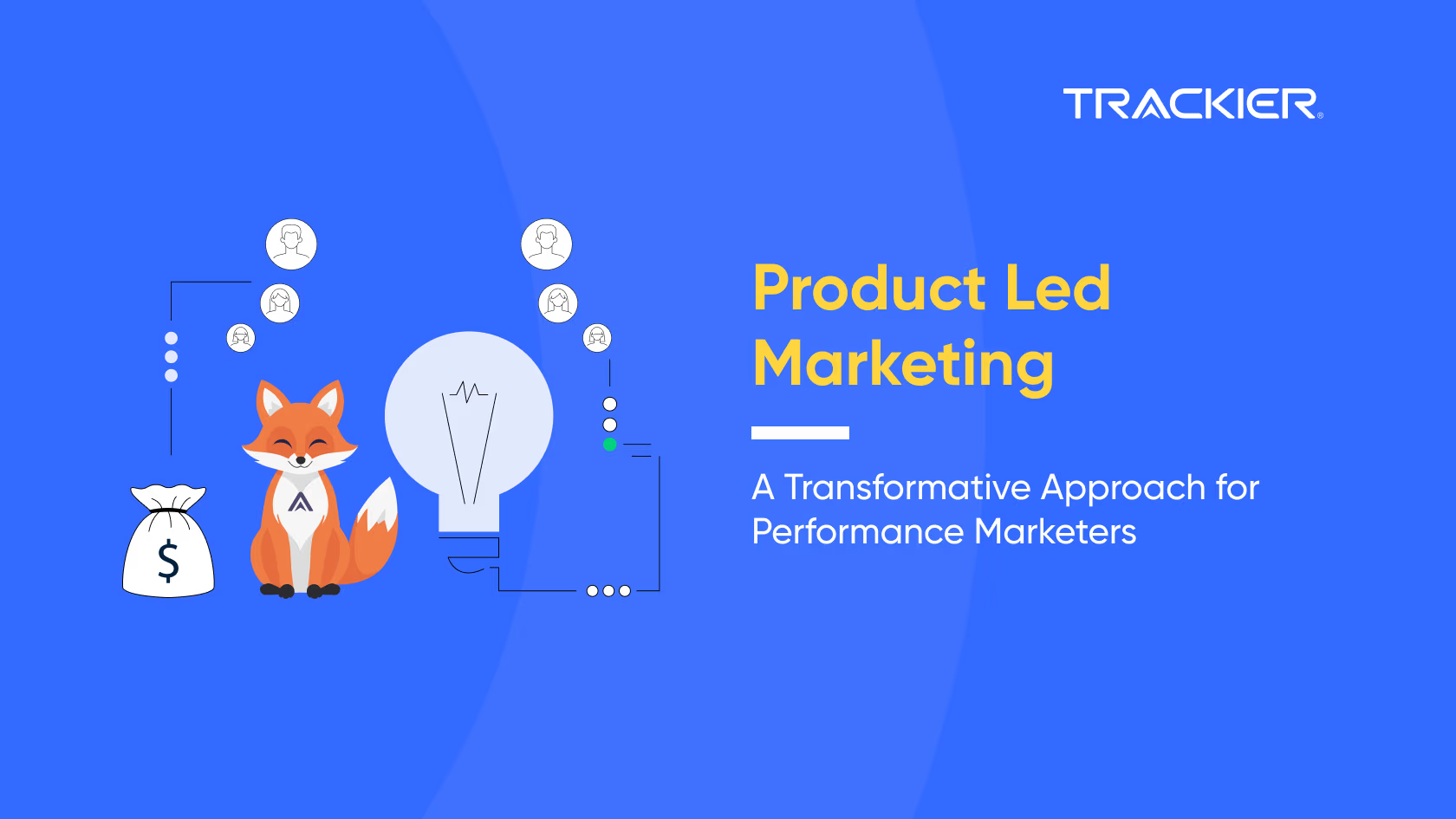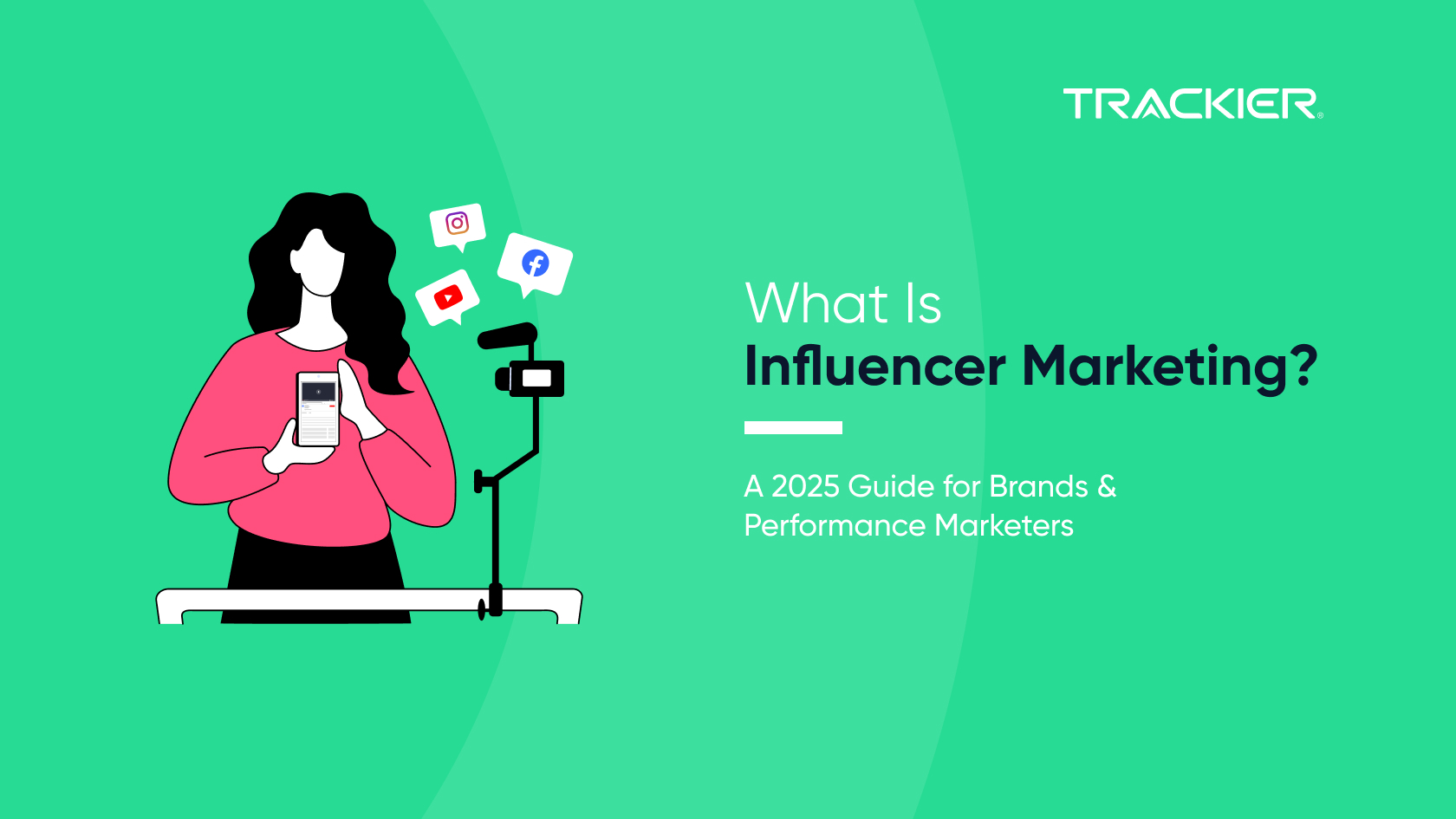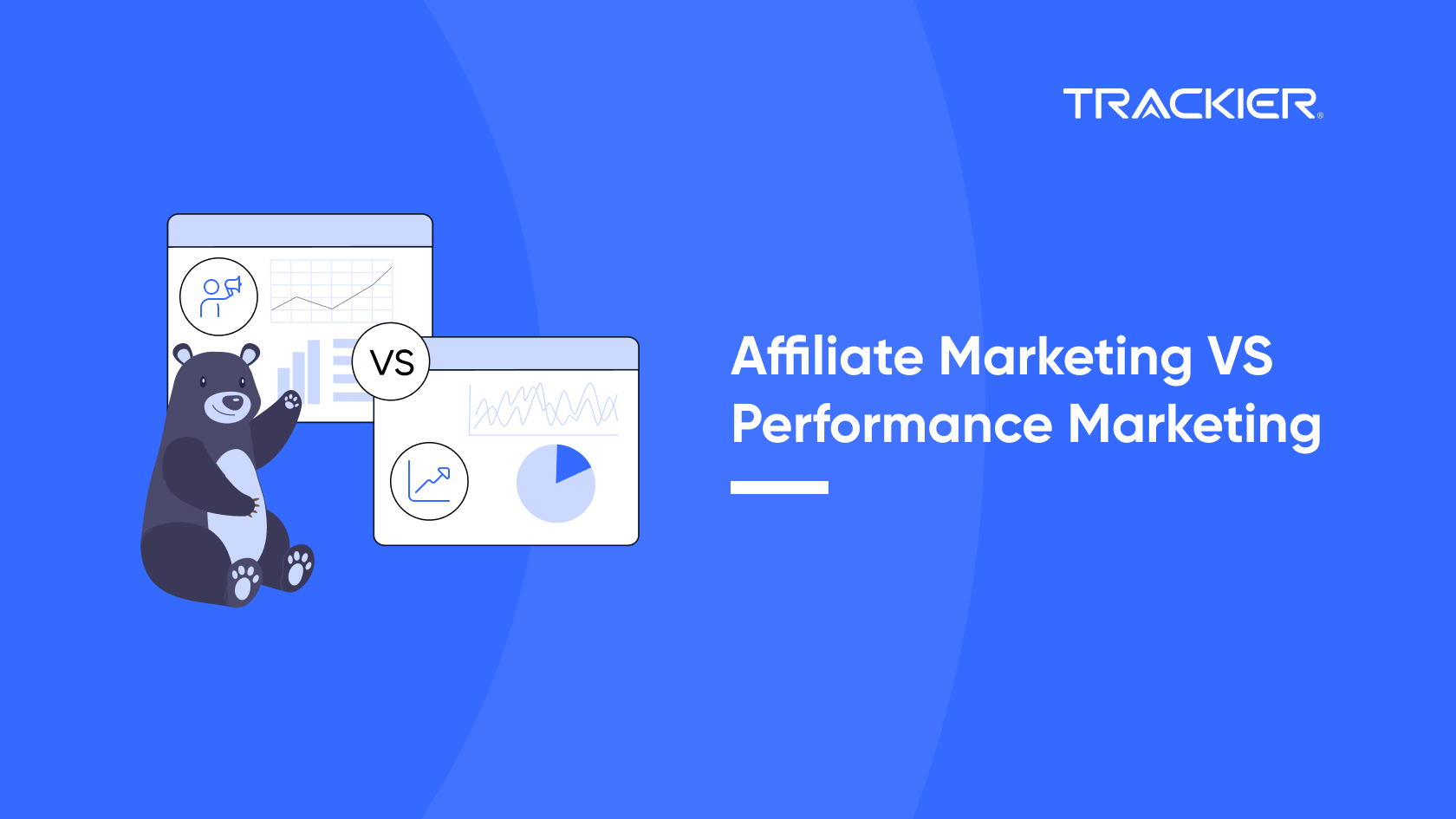Today, businesses are always looking for new ways to attract, engage, and retain customers. Traditional marketing strategies often focus on external promotions and persuasive sales tactics, but a more effective and sustainable approach has emerged, product led marketing.
This strategy shifts the focus to the product itself, using its features, usability, and customer experience to drive organic growth. By integrating product led growth marketing with performance marketing principles, businesses can enhance user acquisition and improve retention rates.
This blog will explore the fundamentals of product led marketing, its significance in the performance marketing industry, key strategies for implementation, and the metrics that help measure success.
What is Product Led Marketing?
At its core, product led marketing (PLM) is a strategy that uses the product as the primary tool for marketing, acquisition, and retention. Unlike traditional marketing methods that rely on aggressive outbound sales and advertising, product led marketing focuses on letting users experience the product firsthand.
Instead of telling potential customers why they need the product, businesses offer free trials, freemium models, or self-serve onboarding experiences that allow users to discover value on their own. This approach not only increases engagement but also fosters trust and long-term loyalty.
The Relationship Between Product Led Growth (PLG) and Marketing
Product led growth (PLG) is a broader business strategy in which the product drives customer acquisition, activation, and expansion. In PLG marketing, the role of marketing evolves beyond lead generation, it becomes an integral part of the user’s journey within the product.
Performance marketers who adopt PLG marketing focus on:
- Enhancing the user experience within the product
- Encouraging organic growth through customer advocacy
- Using data to refine the product and marketing strategies
- Aligning marketing efforts with user engagement and retention
Why Product Led Marketing Matters for Performance Marketers
For professionals in partner, affiliate, and performance marketing, the adoption of a product led marketing strategy brings several advantages:
- Lower Customer Acquisition Costs (CAC): Since users experience the product before committing, they enter the sales funnel more informed and are more likely to convert.
- Higher Retention Rates: When the product itself delivers a strong value proposition, customers stay engaged for longer periods.
- Stronger Word-of-Mouth Growth: Satisfied users naturally advocate for the product, driving organic referrals and increasing market reach.
- Data-Driven Optimization: Insights gained from user interactions within the product help refine marketing campaigns for better targeting and personalization.
Key Elements of a Product Led Marketing Strategy
To effectively implement product led marketing, businesses need to focus on the following components:
1. Seamless Onboarding Experience
A frictionless onboarding process is crucial in ensuring that users immediately grasp the product’s value.
A well-structured onboarding process should include:
- Interactive walkthroughs
- Tooltips and contextual guidance
- Clear and concise tutorials
- Quick access to customer support
When users can quickly understand how to use the product and achieve their goals, they are more likely to continue using it and eventually convert into paying customers.
2. Data-Driven Insights for Personalized Marketing
One of the biggest advantages of a product led approach is the ability to collect real-time data from user interactions.
Performance marketers can leverage this data to:
- Identify drop-off points in the user journey
- Personalize marketing messages based on behavior
- Test different product experiences for better engagement
By understanding user behavior within the product, marketers can create highly targeted campaigns that resonate with specific segments.
3. Encouraging Viral Growth Through Network Effects
Successful PLG marketing strategies often incorporate built-in mechanisms for organic user acquisition.
Some proven tactics include:
- Referral incentives
- Social sharing integrations
- Collaborative product features that encourage team adoption
When existing users introduce the product to others, acquisition costs decrease, and brand credibility increases.
4. Continuous Feedback and Iteration
Understanding customer needs through direct feedback ensures that the product evolves in ways that benefit users.
Methods to collect feedback include:
- In-app surveys
- User interviews
- Customer support interactions
- Analytics tracking
When businesses act on user feedback, they create a product experience that continuously improves, leading to higher engagement and satisfaction.
Implementing Product Led Marketing in Performance Marketing Campaigns
For businesses in partner, affiliate, and performance marketing, a product led growth marketing strategy can drive more meaningful engagement and higher conversion rates.
Here’s how:
1. Collaborate with Product Teams
Performance marketers must work closely with product development teams to align messaging with actual product value. This ensures that marketing materials accurately reflect the user experience and address customer pain points.
2. Develop Educational Content
Content marketing plays a key role in a product led strategy. Instead of pushing traditional sales-driven messages, marketers should focus on creating:
- Product tutorials
- Webinars and workshops
- Case studies featuring real-world product led growth examples
Educational content not only helps potential users understand the product but also nurtures existing users toward higher engagement.
3. Optimize for In-Product Conversions
Since the product itself is a marketing tool, marketers must ensure that conversion opportunities are seamlessly integrated. Strategies include:
- Clear calls-to-action within the product interface
- Automated follow-up emails triggered by user behavior
- Gradual upselling based on usage patterns
Trackier’s Role in Product-Led Marketing
At Trackier, we help businesses implement product-led marketing by providing a powerful platform that enables performance marketers to track, analyze, and optimize their PLG marketing efforts. Our platform ensures that businesses can measure the effectiveness of their marketing campaigns and understand user behavior within their product.
How Trackier Supports Product-Led Marketing
- Tracking and Analyzing User Behavior
With Trackier, businesses can monitor how users interact with their product, from the first touchpoint to conversion.
Our platform collects data on user actions, such as sign-ups, feature adoption, and retention, allowing marketers to identify what drives engagement and what causes drop-offs.
Example: A SaaS company can track which product features free users engage with the most and use this data to refine onboarding flows and encourage upgrades.
- Attributing Conversions to Marketing Efforts
In a PLG marketing strategy, multiple touchpoints contribute to a user’s decision to convert. Trackier’s attribution tools help businesses understand which marketing channels and campaigns are driving the most engaged users.
Example: If a company offers a free trial, Trackier can show whether the trial users came from organic search, paid ads, or referral links, helping businesses allocate their marketing budget more effectively.
- Optimizing Affiliate and Partner Marketing for PLG
Many businesses use affiliate and partner programs to bring in users. Trackier simplifies the process of tracking referrals, ensuring that partners are credited correctly for driving product-qualified leads (PQLs).
Example: A performance marketing team can set up automated commission structures that reward affiliates when a referred user reaches a key activation milestone within the product.
- Automating User Engagement Strategies
Trackier integrates with marketing automation tools to help businesses personalize user experiences based on real-time data.
Example: If a trial user hasn’t used a key feature within the first few days, an automated email campaign can be triggered to encourage engagement.
- Measuring Product-Led Growth Metrics
Trackier provides insights into key product-led growth examples, such as activation rates, PQLs, and retention rates. These insights help businesses refine their strategy to maximize conversions and revenue.
Example: If data shows that users who complete a tutorial are more likely to upgrade, marketers can optimize the onboarding process to guide users toward that action.By offering detailed analytics, automation, and seamless tracking, Trackier ensures that businesses can successfully implement customer-led marketing strategies that drive long-term growth.
Measuring Success in Product-Led Marketing
To evaluate the impact of product-led marketing, businesses must track key metrics that indicate user engagement, conversion, and retention. Here are the most critical product-led growth benchmarks that help measure success:
1. Product-Qualified Leads (PQLs)
Unlike traditional leads, PQLs are users who have actively interacted with the product and demonstrated buying intent. Businesses using a PLG marketing approach track PQLs to understand which users are more likely to convert.
Benchmark: On average, businesses with a strong PLG strategy see a 20-30% conversion rate from PQLs to paying customers.
Example: A SaaS company offering a free trial tracks PQLs based on users who complete onboarding and engage with premium features.
2. Activation Rate
The activation rate measures how many new users reach a meaningful milestone within the product, such as completing setup, using a key feature, or achieving a predefined goal.
Benchmark: Top-performing PLG companies aim for an activation rate of 30-60% within the first few days of signup.
Example: If a project management tool considers adding a task as an activation event, they would track how many new users perform this action within the first 48 hours.
3. Free-to-Paid Conversion Rate
Since product-led marketing relies on free trials and freemium models, the percentage of free users who upgrade to a paid plan is a crucial success indicator.
Benchmark: The typical free-to-paid conversion rate ranges from 2% to 5% for freemium models and 15% to 25% for free trials.
Example: A marketing automation tool might see higher conversions if trial users who send an email campaign are more likely to subscribe to a paid plan.
4. Customer Retention Rate
Retention is key in customer-led marketing, as long-term users contribute to sustained revenue growth. A high retention rate indicates that users find ongoing value in the product.
Benchmark: Successful PLG companies maintain a 6-month retention rate above 60%.
Example: A B2B SaaS company tracks monthly active users (MAUs) and feature adoption rates to assess long-term engagement.
5. Expansion Revenue
A key advantage of product-led growth marketing is the ability to increase revenue from existing customers through upsells, cross-sells, and usage-based pricing.
Benchmark: Leading PLG companies achieve a net revenue retention (NRR) of 100% or higher, meaning existing customers contribute more revenue over time.
Example: A cloud storage provider that offers additional storage upgrades sees increased expansion revenue from users exceeding their initial storage limit.
6. Net Promoter Score (NPS)
A strong NPS reflects user satisfaction and the likelihood of word-of-mouth referrals. High NPS scores contribute to organic growth and reduced acquisition costs.
Benchmark: Companies with effective product-led strategies aim for an NPS score above 50.
Example: A video conferencing tool asks users how likely they are to recommend the platform, using this feedback to improve the product experience.
7. Average Revenue Per User (ARPU)
Tracking ARPU helps businesses assess whether their PLG strategy is driving sustainable growth by increasing revenue from each active user.
Benchmark: Companies with scalable PLG models see consistent ARPU growth of 10-20% annually.
Example: A subscription-based analytics platform increases ARPU by offering premium data visualization tools to existing users.
Conclusion
For businesses in affiliate, partner, and performance marketing, adopting a product-led marketing approach creates a sustainable path to customer acquisition and retention. By prioritizing product experience, leveraging real-time data, and integrating marketing within the user journey, companies can achieve significant growth while reducing reliance on traditional sales-driven tactics.
As competition continues to intensify, businesses that embrace PLG marketing will stand out by delivering tangible value directly through their products.
By refining their strategy and focusing on product-driven engagement, performance marketers can drive long-term success in an increasingly customer-driven landscape.
Hungry for more?
Sign up for our weekly newsletter to get tips like these delivered, straight to your feed.
FAQs
1. What types of products are best suited for product led marketing?
Product led marketing works especially well for SaaS, digital tools, and apps that can quickly demonstrate value through hands-on use. Products with clear, measurable outcomes, like project management software, analytics platforms, or collaboration tools, tend to see stronger adoption because users can experience results during trials or freemium use without heavy onboarding from sales teams.
2. How does product led marketing differ from product led growth?
While both concepts focus on the product as the main driver of business results, product led marketing is specifically about using the product’s experience as a marketing channel to attract and convert users. Product led growth is broader, encompassing the entire business model, including sales, customer success, and operations, where the product is central to all stages of the customer journey.
3. Can product led marketing work without offering a free trial or freemium model?
Yes. While free trials and freemium tiers are common in product led marketing, businesses can still apply the approach by offering interactive demos, sandbox environments, or guided simulations. These alternatives let prospects explore the product’s value before committing, which still builds trust and drives qualified leads into the funnel.
4. How can product led marketing support affiliate and partner programs?
When affiliates or partners promote a product that users can immediately try, conversion rates typically increase. Product led marketing makes partner-driven traffic more valuable because users engage with the product early in their journey, often leading to higher activation rates, better retention, and more satisfied referrals, which in turn motivates affiliates to promote more actively.
5. What are common challenges when implementing product led marketing?
Some challenges include ensuring the product’s onboarding is intuitive, aligning marketing and product teams to share data effectively, and defining the right activation metrics. In product led marketing, if the product fails to deliver value quickly, users will churn before converting. Overcoming these challenges often involves iterative UX improvements, continuous user feedback, and close collaboration between marketing, product, and support teams.



